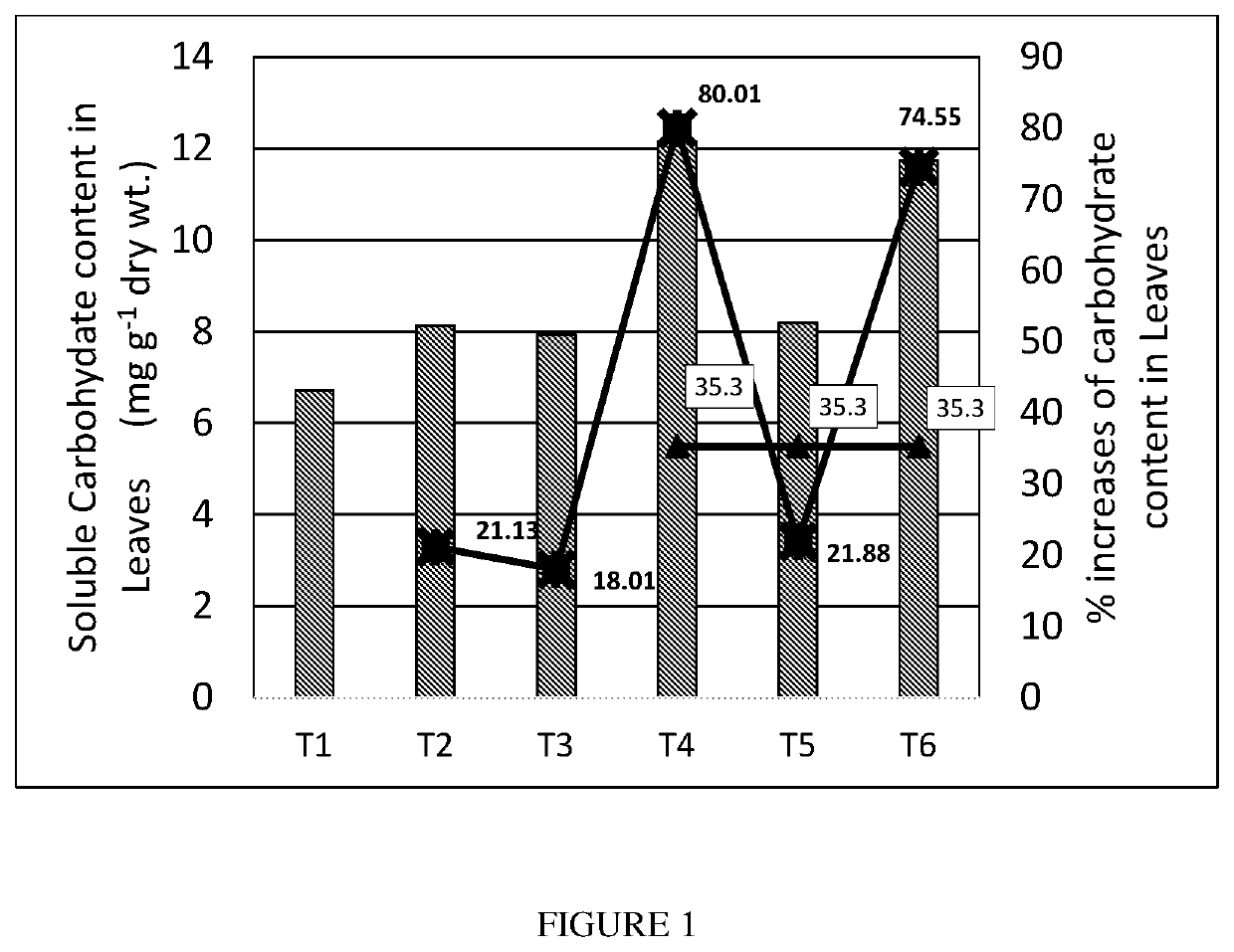Novel crop nutrition and fortification composition
a technology of composition and crop, applied in the field of crop nutrition and fortification composition, can solve the problems of poor plant growth and development, reduced plant growth, and stunted growth, and achieve the effects of good physical and chemical properties, enhanced susceptibility, and easy dispersibility
- Summary
- Abstract
- Description
- Claims
- Application Information
AI Technical Summary
Benefits of technology
Problems solved by technology
Method used
Image
Examples
preparation examples
[0160]The following examples illustrate the basic methodology and versatility of the composition of the invention. It is recognized that changes may be made to the specific parameters and ranges disclosed herein and that there may be a number of different ways known in the art to change the disclosed variables. However, it should be noted that these preparation examples are merely exemplary and are not intended to limit the scope of the invention. And whereas it is understood that only the preferred embodiments of these elements are disclosed herein as set forth in the specification and drawings, the invention should not be so limited and should be construed in terms of the spirit and scope of the claims that follow.
[0161]A. Water Dispersible Granular Composition of Manganese and Elemental Sulphur
[0162]Example 1: Water dispersible granular composition of Manganese chloride and elemental sulphur was prepared by blending 80 parts of elemental sulphur, 10 parts of manganese chloride an...
experiment no 2
[0214]Field trial to assess the impact of different formulations of Sulphur (S)+various Manganese salts, at different concentrations on the carbohydrate content in leaves, pod numbers, test weight, yield and oil percentage in Soybean.
[0215]The effect of the combination of Sulphur and Manganese in different concentrations and different forms, including water dispersible granules and suspension concentrates, both as per the embodiment of the present invention, was assessed by field trial experiment in commercially cultivated Soybean field at Saver, Ujjain (MP) for carbohydrate content in leaves, pod numbers, test weight, yield and oil contents.
[0216]The trials were laid out during kharif season in Randomized Block Design (RBD) with ten treatments including untreated control, replicated thrice. For each treatment, plot size of 35 sq.m (7 m×5 m) was maintained. The samples evaluated included combinations of Sulphur and various Manganese salts in varying concentrations and specific dosag...
experiment 3
Effect of Sulphur and Manganese Dioxide in Various Forms, Including Composition as Per the Present Invention, on the Carbohydrate Content in Soybean
[0237]The observations on carbohydrate content in soybean leaves was also assessed at 50 days sowing of the soybean crop by taking the samples from all the treated plots and the mean data is presented in form of Graph 1 (FIG. 1) to see the effect of different formulation of Sulphur (S)+Manganese dioxide (Mn) combination on the improvement in carbohydrate content in the soybean leaves.
[0238]The treatment details are as follows:
[0239]T1—Untreated;
[0240]T2—Manganese dioxide 25% granules @ 790 g / acre Mn;
[0241]T3—Sulphur 90% WDG @ 2000 g / acre S;
[0242]T4—Sulphur 40%+Manganese dioxide 25% (Mn −15.9%) WDG @ 2000 g / acre S+790 g / acre Mn;
[0243]T5—Sulphur −40%+25% Manganese dioxide (Mn −15.9%) Pastilles @ 2000 g / acre S+790 g / acre Mn;
[0244]T6—Sulphur −20%+12.5% Manganese oxide (Mn −7.95%) SC @ 2000 g / acre S+790 g / acre Mn;
[0245]The expected percentage...
PUM
| Property | Measurement | Unit |
|---|---|---|
| size | aaaaa | aaaaa |
| size | aaaaa | aaaaa |
| size | aaaaa | aaaaa |
Abstract
Description
Claims
Application Information
 Login to View More
Login to View More - R&D
- Intellectual Property
- Life Sciences
- Materials
- Tech Scout
- Unparalleled Data Quality
- Higher Quality Content
- 60% Fewer Hallucinations
Browse by: Latest US Patents, China's latest patents, Technical Efficacy Thesaurus, Application Domain, Technology Topic, Popular Technical Reports.
© 2025 PatSnap. All rights reserved.Legal|Privacy policy|Modern Slavery Act Transparency Statement|Sitemap|About US| Contact US: help@patsnap.com

